Cate Blanchett appears on the cover of issue 18 of Cap 74024 Magazine to talk about Toku Saké, where she is the creative director, and her production company Dirty Films. Photographed by Zhong Lin and interviewed by Gianluca Cantaro, the magazine is out now and you can order here.
Elegant, poised and intellectual, Academy Award-winning actress Cate Blanchett sweep the film enthusiasts worldwide off their feet with her outstanding talent and exquisite cinematic performances. A gem of the silver screen and a luminant on the stage, Cate Blanchett garnered numerous accolades across independent films, blockbusters and theaters. Off screen, she is a proponent in humanitarian and environmental activism, and an open-minded global citizen. Her passion for Japanese culture and cuisine leads her to become the creative director of premium Toku Saké.
In a heart-to-heart conversation, we discuss her feelings for a beautiful country that knows how to celebrate tradition and craftsmanship and her future plans to the Dirty Films production company she founded with her husband, Andrew Upton, and Emmy-nominated producer, Coco Francini.
Hello, Cate, excited to talk to you about Japan today, I hear you have a deep passion for that country.
CB: Yes, I think once you connect with Japanese culture, you can’t really disconnect. There’s a tension there but also an incredible beauty, a speed but also a parallel glacial pace to life. It’s influence the way I experience my own daily life.I always tell people that they will love it or hate it. There is no in-between.
CB: I agree. It’s such a deep and powerful culture. When I meet people who have had tricky time in Japan, I wonder if it’s because they’re transposing their own worldview onto a society whose deep treasures are often invisible ephemeral and take time to reveal themselves. Japan is steeped in history and ritual and slowing down. Even though it can feel in Tokyo or any of the big cities that there is a particular tension and energy, actually your blood has to move differently, you know? It’s a culture where the process is as important as the outcome. You have to surrender to it.Yes definitely, something you only realise once you’re there. When did you fall in love with Japan?
CB: As a child, I used to spend every afternoon at my friend Noriko’s house. I must have been six or seven. I can’t remember what her parents did. You never know what your friend’s parents do at that age but they didn’t speak English and I had no Japanese. I would have dinner with them and back then in suburban Australia, even the idea of tropical fruit was new. Our cuisine was very much still boiled vegetables, the worst end of British cuisine, so you can imagine dinner with Noriko’s family was a revelation, not just the cuisine, but the meal transpired. I cooked with them, play with toys I’d never seen before, made origami. Noriko’s bento box would be tied up with furoshiki. The care and ritual that went into preparing the food was remarkable and delicate. I named my doll after Noriko when she left. I became friends with another boy, Yoshida. So, many of my early friends at primary school were Japanese. I guess that was foundational in some way.You’ve been around Japanese people all your life.
CB:Yeah! Australia is in Southeast Asia so many different south Asian cultures. I have always enjoyed the food, but I had my first saké at drama school. There was a Japanese restaurant nearby and I used to go there for lunch and often have saké at lunchtime… but it was hot saké. It wasn’t until later than I drank it cold. I was working with a Japanese skincare company and some of the ingredients in their products came from the fermentation process in saké brewery. I visited many saké breweries and became fascinated by whole process, the fermentation, the rice polishing. That’s when I really began to taste the vast differences in the category. Of course, saké is just one reading of the kanji for alcohol, the more appropriate way to refer to it is nihonshu, and the category is enormous. Like a lot of people in the West, I had thought saké was a blanket term, but there are as many varieties of it as there are wines, of course. Over the years, my palette has expanded.I read that Asahikawa, the city where you produce Toku Saké, takes it name from a mistranslation of Ainu dialect into Japanese, so it is now called “River of the Morning Sun”, which is not the original meaning. What a beautiful mistake! Have you been there?
CB:I am desperate to go. The breweries I have thus far visited were not in Hokkaido but in and around the Kyoto prefecture.I know you’re interested in women working in saké, I will introduce you to one I met from around Nara.
CB:Thank you. I am all up for collaborations. I have started a direct relationship with Imadasan, one of the few female Toji who makes beautiful, limited releases and her approach is quite unique. As you know, female Toji are so rare.Have you spoken with the Toji, the master brewer, who works on your saké?
CB:Yes, because I find the process as fascinating as the drinking.How do you wish to develop saké culture and the creative side of the company?
CB:I think there’s still a lot of mystery surrounding the category and collectively raising awareness of the category is of vital importance. I have wanted develop a saké for so many years because of the love of ritual of drinking nihonshu, the surprising taste of it and how can it be enjoyed like a wine with so many different cuisines. I had even thought about growing rice in France! But when I met my partners Anthony Newman and Peter Hudson and tasted this liquid, I knew the search for liquid had ended. Toku was like no other I had tasted. It is complex yet pure, fun like champagne and wonderfully aromatic. It can be used in cocktails too! I think there’s still a need for education and encouragement for people to try it. Not only to compliment their meal but as a celebratory, ritualistic experience that a lot of alcohols don’t innately have. I think there’s a real appetite for saké because it unlocks different experiences that we don’t necessarily associate with alcohol in the West as well as the flavours of foods. Raising awareness of how exciting saké can be is a challenge, but I love a challenge.For most people in the West, saké is only considered a hot drink at the end of a meal. Let’s spread the word that it goes brilliantly with the meal, just like wine!
CB:“Brewed like a beer, drunk like a wine”, exactly. We’ve begun with a limited release. I hesitate to use the word ‘exclusive, but we want to make sure from the outside that the quality control was carefully curated. We’re in many different types of restaurants in London already, not all Japanese, which is having demystifying effect already. A lot of sommeliers can recommend saké to pair with certain foods which it might be challenging to find a complementary wine. Personally, I find wine can be heavy or overbearing during meal. Saké is purer and lighter, fresher, more open hearted.How are you planning to bring the two cultures together?
CB:Quite a while ago, I read that there was a drop in saké sales within Japan itself and more interest in Western-style alcohols. I thought that was interesting. Now I’m not Japanese, but that is the wonderful thing about Toku. Not only is it brewed in the Hokkaido prefecture, but it matures unpasteurised there too. It’s very much a Japanese liquid, but we are Westerners. There is a curiosity on both sides about that, so we meet somewhere in the middle. I think there are only three breweries in that area that export, so I feel really lucky that our nihonshu is making it out. I have found Japanese culture one of intense curiosity. Western concepts are interpreted through a very Japanese lens. Personally, I find this stimulating. Conversely in our conversations with manufacturers and distributors over there, we’ve been met with curiosity about our take on something that is so inherently Japanese. They want to know — why saké, why not a more western drink. Many people I have met in Japan have reflected anew upon the category through external interest in it. And ours is very much meant to be enjoyed ice cold.Once I started drinking it cold, I never went back! On a different note, I see you’ve founded a production company. What prompted that?
CB: Well my husband and I ran the Sydney Theatre Company in Australia for ten years and we really enjoyed producing the work of others. I think increasingly producers see their role as simply pulling the finances together, but often creativity is lacking. Perhaps that’s why you see so many directors and actors producing their own work as well as the work of others. They understand the creative pitfalls where the cinema artists need support and where they can and can’t cut costs, you know? To me, that process is intensely creative. Years and years ago, there was a fashion — when there was a death of roles for women once they hit the age of 30 — for people to option books for themselves to be in. That wasn’t something I was interested in because I’m always drawn to the surprise ask, not something I will into being. When a director approaches me to play a certain role like Bob Dylan, you think, “Oh that’s bizarre… Ok!”. But I would never have optioned “Chronicles” and wanted to place myself in it. Dirty Films was created in party to help facilitate the work of other people. Sometimes it’s helpful for me to be in the work, but we’re ostensibly interested in widening the conversation to include the people who are often shut out.Is the Proof of Concept project you’re doing with Dr Stacy Smith a part of that?
CB: We met in Cannes last year, I made “Tár” with Todd Field, and my character name-checked the Annenberg Inclusion Initiative, which Dr Stacy heads up. I had done research into what they’d done, and my producing partner, Coco Francini, and Dr Stacy cooked up this idea which I am thrilled to be part of: supporting emerging female, trans and non-binary directors who may have been part of other programmes, but never actually got to make their feature. It’s important for us to have an accelerated programme that is actionable. There is a lot of talk about supporting marginalised voices, but often these voices get stuck in a development loop, never actually getting on-set to direct their film. We feel this is a tangible way to help bridge that gap. What was really interesting was the selection committee who came on board pretty much immediately. Having names as Chloé Zhao, Emma Corrin, Eva Longoria, Greta Gerwig, Jane Campion, Janicza Bravo, Lily Gladstone, and Lilly Wachowski is hugely gratifying. They’re immensely talented film artists who have had to fight hard, who understand the challenges and pitfalls of the industry. We are so grateful to have their support.Well, I think we’re running out of time.
CB: Ok, but before you go, have you had a chance to try Toku yet? Honestly, it’s heaven. I’ll send you a bottle.OMG thank you! I’d love to try it, speak soon.



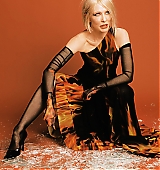
 Welcome to Cate Blanchett Fan, your prime resource for all things Cate Blanchett. Here you'll find all the latest news, pictures and information. You may know the Academy Award Winner from movies such as Elizabeth, Blue Jasmine, Carol, The Aviator, Lord of The Rings, Thor: Ragnarok, among many others. We hope you enjoy your stay and have fun!
Welcome to Cate Blanchett Fan, your prime resource for all things Cate Blanchett. Here you'll find all the latest news, pictures and information. You may know the Academy Award Winner from movies such as Elizabeth, Blue Jasmine, Carol, The Aviator, Lord of The Rings, Thor: Ragnarok, among many others. We hope you enjoy your stay and have fun! 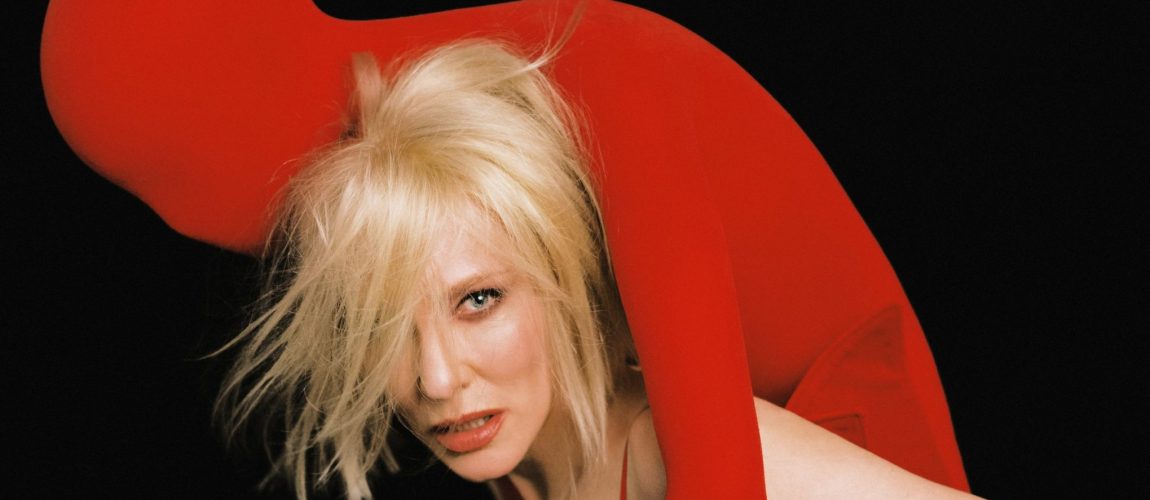



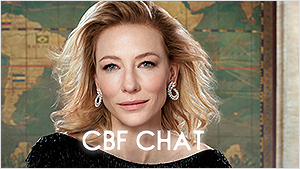
 Black Bag (202?)
Black Bag (202?) Father Mother Brother Sister (2024)
Father Mother Brother Sister (2024) Disclaimer (2024)
Disclaimer (2024)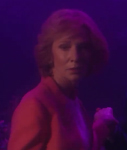 Rumours (2024)
Rumours (2024) Borderlands (2024)
Borderlands (2024) The New Boy (2023)
The New Boy (2023) TÁR (2022)
TÁR (2022)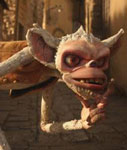 Guillermo Del Toro’s Pinocchio (2022)
Guillermo Del Toro’s Pinocchio (2022)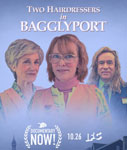 Documentary Now!: Two Hairdressers in Bagglyport (2022)
Documentary Now!: Two Hairdressers in Bagglyport (2022)












